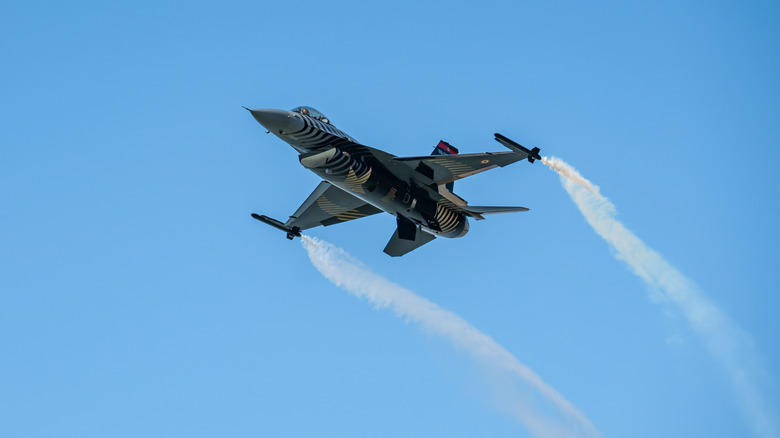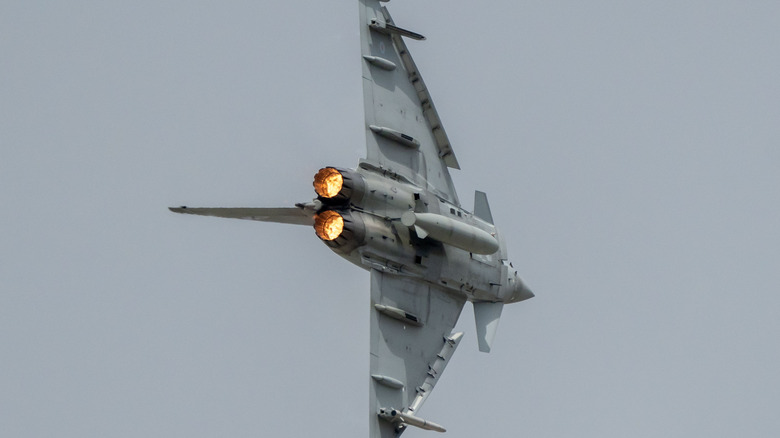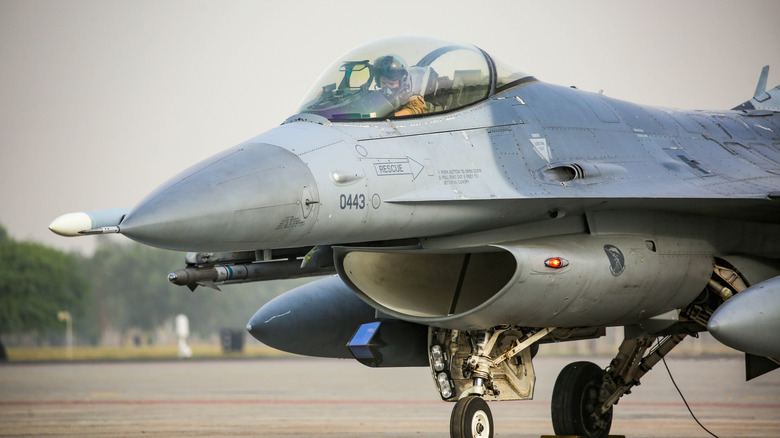
Naturally, there will be some skills that commercial and fighter pilots share. Both maneuver fixed-wing aircraft, but commercial and fighter planes are very different vehicles designed for very different purposes. For a workhorse commercial jet, it's imperative that journeys are as efficient, reliable, and predictable as possible. Stability in the air is critical for this.
For the most sophisticated fighter jets, the opposite is true. They're designed to be lightweight and agile to make them easier
to maneuver. The acrobatic stunts at air shows, after all, are the kinds of things that can potentially save a pilot's life in a combat situation. In order to make these planes capable of such moves, they're designed to be unstable. This lends considerable advantages to fighter jets because it offers an enormous degree of responsiveness.
Because some fighter jets are designed to have negative stability (which means that the aircraft goes in the direction of a disturbance to its flight, rather than stabilizing), it is far more difficult for opposing pilots to predict and anticipate its movements. By the same token, though, that means it could be very difficult for its own pilots to maintain control as it deviates. The thing that makes this approach practical, and which makes fighters safe to fly, is that the system is able to compensate for this unpredictability. A fly-by-wire system and flight computers combine to quickly translate the pilot's commands into electronic signals, while also monitoring the aircraft's progress and adjusting where necessary.
Read more: 10 Airplanes That Managed To Fly With Staggeringly Low Horsepower
The Complex Question Of Stability In Aviation

Aircraft can have negative, neutral, or positive stability. These terms reference the way external forces act on a given jet and, in turn, how they influence its flight. A plane with positive stability will return to its previous state after being affected, unlike a negatively stable counterpart. Neutral stability means the jet will alter its position in response, but will then adjust itself to the new "neutral" position in the aftermath.
The complicated thing about these terms is that movements across three different axis need to be taken into account. Yaw, pitch, and roll are the terms used to describe movement on each different axis. With them in mind, it's easy to see how an airliner's position and how it corrects — or doesn't — can make control very complex. What makes things even more complicated is that planes can either have static or dynamic stability, too. The difference is that static stability is determined by an aircraft's behavior in response to a force currently influencing it, while the dynamic stability is a matter of how it behaves in the aftermath.
As former MIT professor Gunter Stein put it in IEEE Control Systems Magazine in 2003, "an airplane is open-loop unstable when its center of pressure ... is located ahead of its center of gravity." As such, static instability is "deliberately designed into an airplane by locating lifting surfaces and distributing mass appropriately." According to Stein, the agility and responsiveness is greatly improved by an inherent instability, but aircraft were very reliant on positive stability before automated flight systems were sophisticated and widespread enough.
The Fly-By-Wire System Comes To The Rescue

What makes these aircraft practical to fly while keeping them as maneuverable as they need to be is the fly-by-wire system they use. The United States Air Force explains that this system in the context of the F-16 Fighting Falcon uses electrical wires to relay commands, while "hand pressure on the side stick controller sends electrical signals to actuators of flight control surfaces" like ailerons on the aircraft's wings or its rudder.
There's a lot of automation involved in aircraft flight, removing some of the strain on the pilot and crew. Fly-by-wire is an extension of that idea, though it isn't exclusive to fighters and has also been employed by commercial jets such as the pioneering Airbus A320 passenger jet. The system is able to monitor the aircraft's performance and keep it stable. As such, a fighter can take advantage of increased maneuverability while continuing to operate safely. A fighter jet that didn't tick both of these boxes would be a liability.
Modern fighter jets pilots are greatly assisted by this computerized system monitoring making in-flight adjustments. It takes tremendous skill to pilot a fighter jet, but they often wouldn't be able to perform the deft movements and awe-inspiring maneuvers we see at air shows without those computerized signals enabling it all. Some of the Air Force's most famous models are also reliant on this tech.
Want the latest in tech and auto trends? Subscribe to our free newsletter for the latest headlines, expert guides, and how-to tips, one email at a time.
Read the original article on SlashGear.











